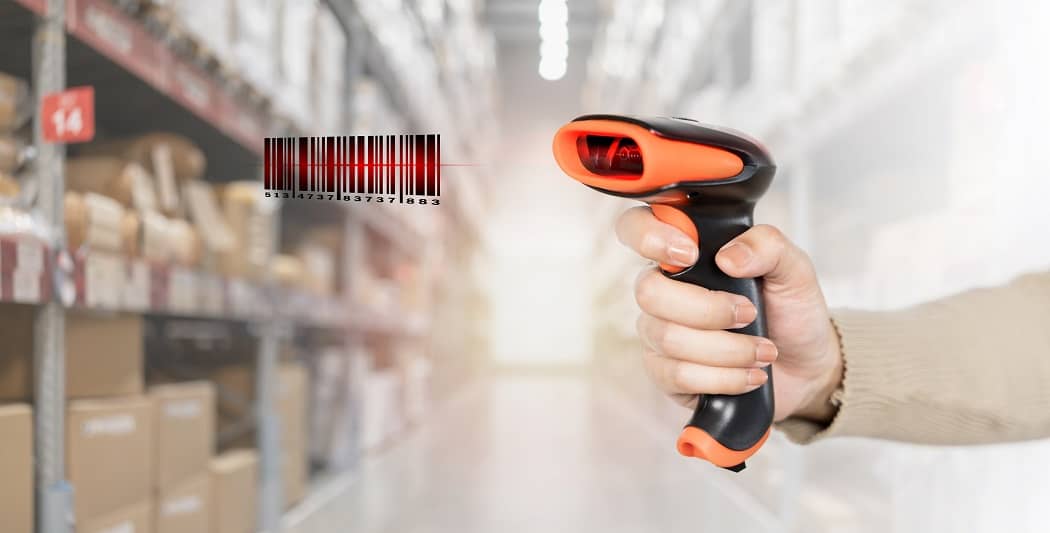Your company is looking for ways to enhance its productivity, improve accuracy, and boost customer satisfaction. You’ve been tasked to find a technological solution, with the added stipulation that the solution needs to be 1) easy to use and 2) (relatively) inexpensive to the corporate pocketbook.
So you start by going online. One technological solution that shows up frequently in your SERPs is barcode scanning. Today’s article explores the workings of this technology, which many organizations feel has revolutionized how modern businesses operate. From the various kinds of scanners to their applications in different industries, you’ll see why barcode technology has been widely embraced from traditional for-profit business enterprises to non-profits and even healthcare organizations.
Understanding Barcode Technology
A barcode, at its most basic, is simply a picture used to represent data. First invented way back in 1948, barcode technology has evolved significantly since then.
The familiar parallel black-and-white lines of barcodes represent various pieces of information: product names, SKU numbers, and manufacturer details. Barcodes typically contain between 20 to 25 characters.
Barcode readers or scanners scan these barcodes. Various scanning technologies are employed, each one suitable to different operational wants and needs. They’re usually found as one of the following:
- Laser Scanners: As the name suggests, these barcode scanners use lasers to read the barcodes. Laser scanners are highly effective when scanning the one-dimensional barcode labels found on most products and are commonly found in retail settings like supermarkets thanks to their speed and accuracy.
- Charge-Coupled Device (CCD) Readers: CCD readers use sensors to measure the light reflected off the barcode. Thus, they’re best for areas that are brightly lit, like retail stores. CCD readers tend to be less expensive than laser scanners.
- Camera-Based Scanners: Unsurprisingly, these scanners take photographs of barcodes (hence the name). A big advantage to this form of scanning is the use of more complex codes, such as QR codes. Many smartphones have camera-based scanners built into them already.
- Handheld Barcode Readers: These scanners are easy to hold and use thanks to their portable design. Many find usage in “hands-on” businesses from retail checkout to warehouses to stockrooms.
- Fixed-Position Readers: These readers are usually found attached to conveyor belt systems like those common in automotive manufacturing. Products from parts to the assembled product pass underneath these readers which in turn scan them, usually through lasers.
- Presentation Scanners: These are those glass surfaces you see (literally) at checkout counters, like at the supermarket and retail stores. Presentation scanners read barcodes automatically as they go past, making them particularly useful to get customers (and their products) out as quickly and efficiently as possible.
Barcode Scanners and Their Benefits
The benefits of barcode technology have transformed business operations. They have:
1. Improved Accuracy
In the past, product information was recorded manually, which is prone to human error, leading to (sometimes) costly mistakes. Barcode scanning dramatically reduced this error rate to the point of near nonexistence. That makes the technology perfect for businesses like sheet metal cutting or drug dosage measurement, where high precision and accuracy are absolute musts.
2. Provide Real-Time Data Access
Barcode scanners update databases instantaneously with each scan. Companies are thus able to access, for example, inventory and sales information in real time. That makes calculating inventory value or tracking sales performance easier and more accurate, which in turn leads to better decision-making.
3. Reduced Training Requirements
Training new employees on complex inventory and sales systems can be time-consuming. Barcode scanners, though, are user-friendly and intuitive: you just swipe the barcode with the scanner. New employees can quickly learn to use them, which makes training and onboarding a cinch.
4. Enhanced Inventory Management
As previously discussed, barcode scanners allow for inventory management in real time. That feature also helps businesses go a long way to minimize excess spending on products, reduce carrying costs, and manage obsolete inventory efficiently for maximized profitability
5. A Cost-Effective Solution
Barcode technology is relatively inexpensive compared to similar technologies such as radio frequency identification (RFID). The setup can be as simple as using a smartphone equipped with scanning software and a limited number of barcodes.
Barcode Scanning Across Industries
Barcode reading and scanning technology have found applications across various sectors. Four notable use cases include:
Enhancing Shipping and Receiving
Barcode scanners allow companies to track packages at each stage of delivery: when they leave the facility, during transit, and upon customer receipt. This tracking reduces the likelihood of lost or misplaced packages and makes it easier to find them when such issues occur. Barcode scanners, especially handheld readers, have become integral to many companies’ shipping and receiving processes, enhancing their supply chain efficiency as they track packages via scanners and their industrial computers.
Error Reduction in Healthcare
In healthcare, barcode readers and scanners are used in a variety of ways to reduce errors. Medical staff like phlebotomists, for example, will label blood samples and other specimens with barcodes before sending them to the lab for analysis. This ensures that the correct results are linked to the right patients. The process overall enhances patient safety and care quality.
Patient Identification
Barcodes on patient wristbands contain vital information such as their name, contact information, and other identifiers. Also included on the wristband are the patient’s medications, their dosage, and the prescribing physician. Other doctors, nurses, and other healthcare staff can thus quickly access the patient’s electronic medical records with a quick swipe of the wristband with the reader, ensuring that the right patient is receiving the right treatments promptly.
Process Streamlining in Manufacturing
Barcode scanners and readers in manufacturing track raw materials used in production. Fixed position readers find a lot of usage in this industry, such as automotive manufacturing. Companies can use the tracked data to help identify defects, streamline processes, and manage costs, all far more effectively than past manual methods.
Choosing the Right Barcode Scanner for Your Business
With so many options and usages, how do you select the right one for your business? Consider the following factors:
1. Scanning Technology
As described earlier, each of the barcode scanners and readers uses different technologies: lasers, light sensors, and cameras. Discuss your specific needs with vendors, then the advantages and disadvantages of each type of scanner in meeting those needs.
2. Scanning Range
Ask the vendor about the range between the scanner and the barcode. Will they be close, or will there be a significant distance between them? This factor can significantly influence the scanner’s performance like speed.
3. Connectivity Options
All barcode scanners and readers are linked to some sort of computer or database to transfer their data. Some use wired connections while others operate via Wi-Fi. Evaluate how each scanner does so: each method has its pros and cons, and choosing the right scanner that aligns with your operational infrastructure will be crucial.
4. Durability
Will your barcode scanners and readers be subject to possible drops and rough handling? Or will they be stationary, located indoors, and rarely be touched by human hands? Consider these questions and more as they will impact the scanner’s durability: handheld barcode readers for warehouses are built quite differently than those scanning clothes items in a retail store.
5. Budget
Handheld scanners can range from $50 to $500, while models like presentation models used in grocery stores can cost thousands. Budget accordingly.
Revolutionizing Efficiency with Barcode Technology
Barcode technology, from the labels to the scanners and readers, offers innovative ways for businesses to enhance their efficiency and accuracy. By understanding how the technology works, the various types of scanners available, and their applications, barcode scanning offers a straightforward yet highly effective solution for collecting information from products to personal data.

